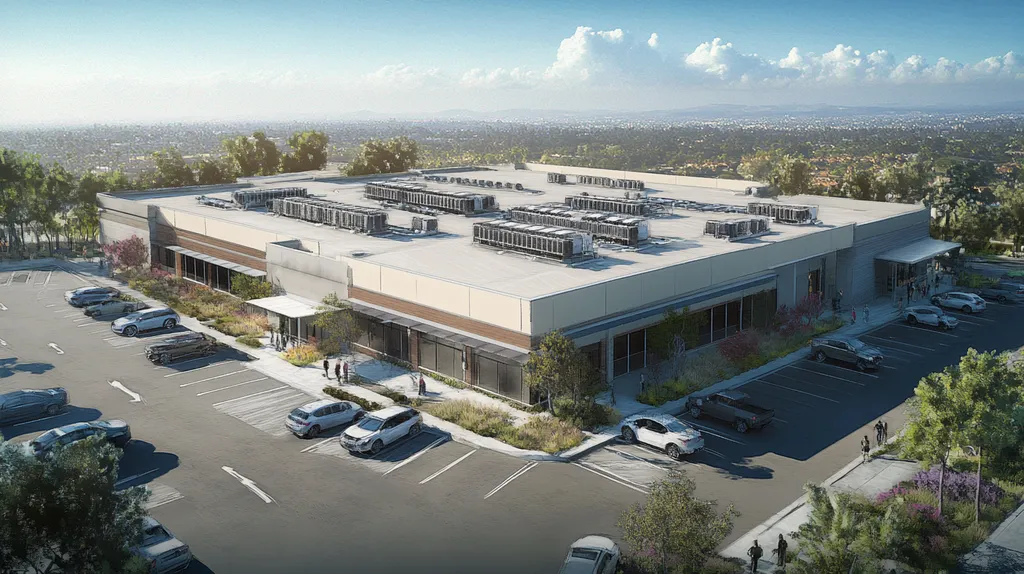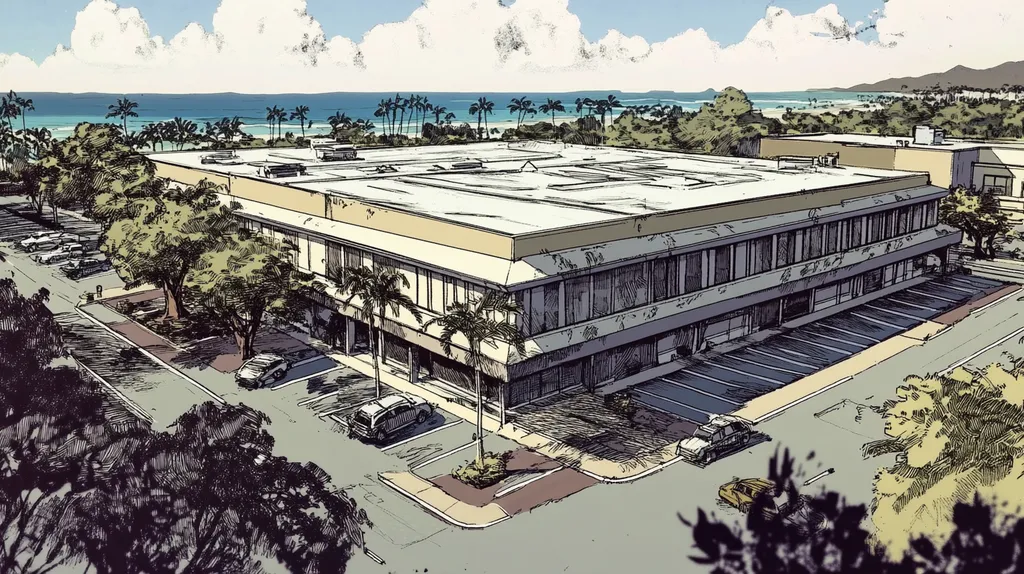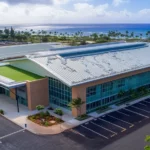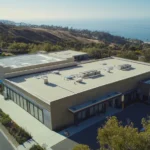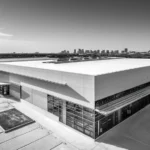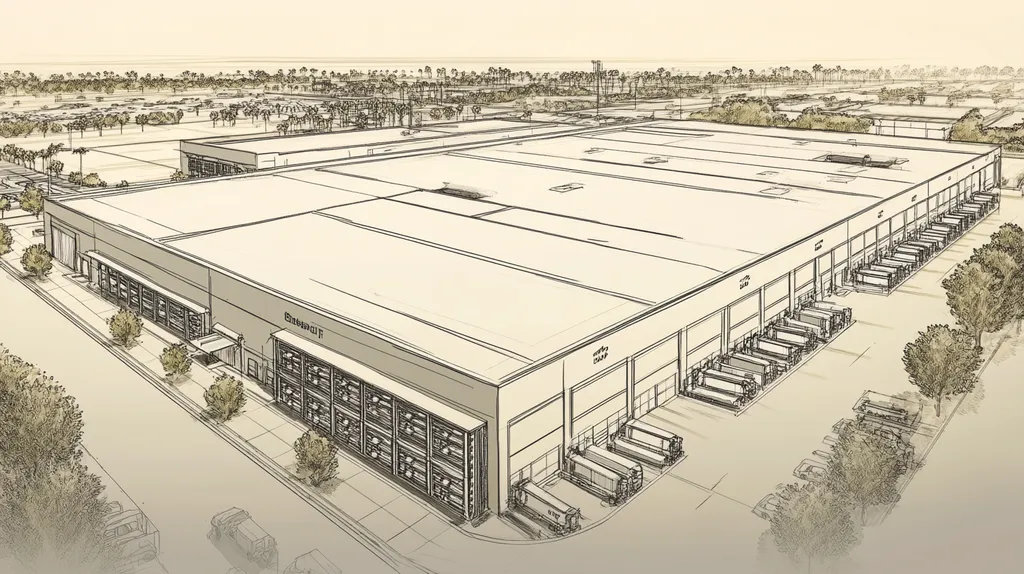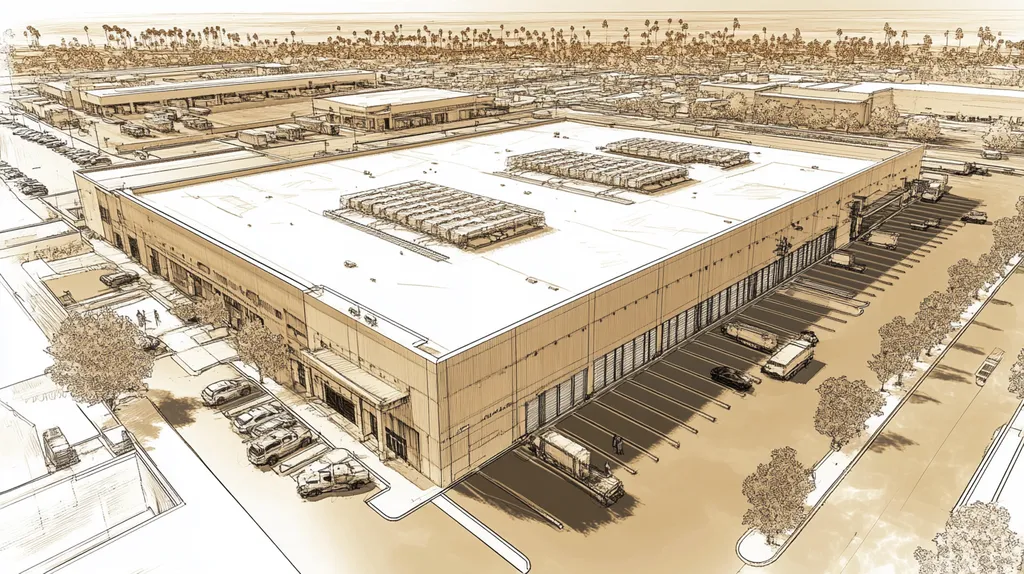Every year, commercial property owners lose millions of dollars due to emergency roof repairs that fail prematurely. Industry data shows that 40% of these urgent coating applications deteriorate within the first 18 months, leading to cascading structural damage and business disruptions.
The conventional approach to emergency roof repairs – rushed applications of standard coatings without proper assessment or preparation – is proving increasingly inadequate in protecting valuable commercial assets.
This analysis examines why traditional repair methods fall short, reveals systemic issues in current practices, and presents data-driven solutions that challenge the status quo of commercial roof maintenance.
SECTION 1: CURRENT PRACTICES
Roofing emergencies pose serious risks, leading to substantial financial losses and potential safety hazards for commercial and industrial properties. Statistics from the National Roofing Contractors Association reveal that nearly 50% of roofing failures stem from inadequate maintenance and improper repairs. For property owners and facility managers determined to safeguard their investments, understanding the landscape of emergency repair coatings is essential. This section delves into the commonly used coating materials, the various application methods, and the industry standards and regulations that shape today’s repair practices.
Common Coating Materials Used
Emergency repair coatings predominantly comprise materials such as acrylics, polyurethanes, and silicone. Each type has distinct properties that make it suited for specific emergency scenarios. For instance, acrylic coatings are often preferred for their rapid drying times and excellent UV resistance.
However, some coatings may struggle with adhesion and compatibility when applied to existing roof surfaces. This can compromise performance and necessitate more frequent repairs. Selecting the most suitable material is crucial, not just for immediate solutions, but for long-term durability as well.
Recently, there’s been a shift towards hybrid systems that amalgamate the best features of multiple coatings, showing promise for improved outcomes. Unfortunately, many property owners still lean on traditional materials without fully exploring the diverse range available, potentially cutting short the lifespan of repairs and hampering business operations.
Application Methods and Tools
The methods used to apply emergency repair coatings can greatly differ. Common techniques include spray application, roll-on methods, and brush applications, each offering unique benefits and drawbacks that can influence the effectiveness of the repair.
Spray applications are often championed for their speed, especially in urgent situations, while roll-on and brush methods allow for greater control in smaller areas. The choice of technique can significantly impact the uniformity and thickness of the coating, thereby affecting its overall effectiveness.
Quality tools are also essential for success. High-quality spray rigs can provide precise application, while inferior equipment can result in waste and inconsistent coverage, raising the chances of repair failure. Proper training for personnel on these methods is crucial, as many contractors continue to use outdated practices that undermine the potential benefits of modern tools.
Industry Standards and Regulations
Following industry standards and regulations is critical in the application of emergency repair coatings. Organizations like the International Code Council (ICC) set forth guidelines that ensure safety and efficacy in roofing practices.
Complying with these regulations not only protects workers but also enhances the longevity of the repairs. However, the intricate nature of these regulations can create confusion, leading to non-compliance and consequent liabilities.
Furthermore, many manufacturers offer their own specific guidelines, adding another layer of complexity to the decision-making process for property owners and facility managers. Too often, these guidelines are overlooked, resulting in improperly executed repairs.
Understanding these regulations is an investment in protecting property integrity. Adequate knowledge helps prevent costly mistakes and ensures repairs align with necessary safety standards, ultimately preserving building value and functionality.
SECTION 2: SYSTEMIC ISSUES
The challenges presented by emergency roof repair coatings can create significant headaches for property owners. Issues like adhesion failures, durability concerns, and gaps in maintenance can lead to severe damage and extended downtimes. Recognizing these systemic problems is crucial for making informed decisions to protect your investment before an emergency occurs.
Adhesion Failures and Delamination
One of the most pressing concerns with traditional emergency roof repair coatings is adhesion failure. Research indicates that nearly 30% of coatings face some form of delamination within just a few years of application. This situation occurs when the coating fails to bond effectively with the existing roofing material.
When adhesion fails, coatings can peel, crack, or separate from the underlying substrate, creating weak points. These vulnerabilities allow water to infiltrate, leading to potentially extensive damage that may go unnoticed until it’s too late.
Delamination poses serious risks, not only to property values but also to the safety of building occupants. The unexpected costs stemming from these failures can exceed what property owners had initially budgeted.
Investing in high-quality, thoroughly tested products and best practices is essential to combat these issues. It necessitates a shift in industry standards to prioritize effective and durable repair solutions over quick fixes.
Weathering and Durability Concerns
Weathering presents another critical challenge for emergency roof coatings. Many coatings on the market today simply cannot endure the harsh effects of UV radiation or extreme temperatures, leading to diminished lifespans. Some subpar coatings are known to last just a single season, which is far from the expected longevity of a quality roofing system.
This lack of durability means property owners must remain vigilant for signs of wear and tear, translating to increased costs and labor. The initial promise of coatings serving as reliable, quick fixes is undermined when they fail to perform.
Inadequate weather resistance can expedite the breakdown of coatings, resulting in leaks and further structural complications. This not only jeopardizes the integrity of the building but disrupts operations and affects tenant satisfaction.
Switching to resilient, high-performance coatings can help mitigate these risks, but many property owners remain unaware of their options and continue to settle for inferior products.
Maintenance and Inspection Gaps
The often-overlooked issue of maintenance and inspection significantly impacts the effectiveness of roof repair coatings. Many property owners mistakenly believe that applying a coating is a one-and-done solution, leading to a lack of follow-up care. Routine inspections are crucial for assessing the coating’s condition over time.
Neglecting regular maintenance can cause minor problems to escalate into major damages. For example, a small crack can allow for water penetration, leading to serious deterioration over the long term. Without a structured maintenance plan in place, repair costs can skyrocket while the roof’s lifespan decreases.
Facility managers should implement clear inspection schedules and maintenance protocols to ensure the ongoing effectiveness of any applied coatings. By conducting regular assessments, potential issues can be identified and addressed proactively, ultimately saving resources.
To transform emergency repairs from reactive measures into effective long-term strategies, the industry must encourage proactive maintenance practices as part of everyday operations.
SECTION 3: MISSED OPPORTUNITIES
In the fast-paced world of commercial roofing, overlooking best practices can have dire financial repercussions. A staggering statistic reveals that up to 60% of property damage originates from unnoticed roof problems. By not addressing these issues early on, property owners and facility managers forfeit essential opportunities to implement effective strategies. This section highlights the critical need for regular roof condition assessments, the importance of tailored coating solutions, and the often-ignored advantages of energy efficiency.
Overlooking Roof Condition Assessments
Conducting regular roof condition assessments is vital for spotting potential issues before they worsen. Many property owners mistakenly adopt a reactive stance, dealing with problems only when they become severe. This approach often leads to extensive damage that could have been avoided with timely intervention.
Failing to carry out proactive assessments can result in unseen water infiltration, which in turn can cause mold growth or significant structural damage. Routine inspections act as the first line of defense against costly repairs and can help maintain the integrity of the roofing system.
Moreover, neglecting regular evaluations can shorten the lifespan of any applied roofing coatings. Delay in addressing minor issues often leads to more frequent repairs, compounding costs over time.
Ultimately, making consistent roof evaluations a priority ensures properties remain safe, sustainable, and cost-effective in the long run, empowering informed decision-making regarding roofing solutions.
Neglecting Customized Coating Solutions
A catch-all approach to roofing coatings can lead to missed chances for enhancing overall performance. Standard coatings often fail to address the unique challenges presented by varying roofing systems. Custom-designed solutions, tailored to specific conditions, can improve durability and extend the lifespan of the roofing system.
Each commercial roof is distinct, shaped by factors such as climate, exposure, and material type. Collaborating with experts to create tailored coating strategies is essential for ensuring resilience against the unique stresses each roof faces.
Investing in customized options not only enhances performance but can also lead to reduced maintenance costs over time. Coatings specifically designed for their intended application can significantly decrease the likelihood of frequent repairs and replacements.
Conversely, overlooking the need for customized solutions can drive up expenses due to repeated failures. Property owners should actively seek coatings that bolster both performance and efficiency to get the most value from their investment.
Ignoring Energy Efficiency Benefits
Energy efficiency is frequently sidelined in commercial roofing decisions, yet it can significantly impact operational costs. Specialized roof coatings can enhance insulation, thereby reducing energy consumption. Reflective roofing solutions, for example, help maintain optimal building temperatures, minimizing dependency on HVAC systems.
Research suggests that reflective coatings can lower energy bills by 10-30%. Such savings can dramatically improve the return on investment for property owners, making energy efficiency a crucial consideration when choosing roofing systems.
Furthermore, ignoring energy efficiency hinders a company’s sustainability goals. Embracing eco-friendly practices not only cultivates a positive corporate image but also aligns with the growing consumer demand for environmentally responsible operations.
In summary, prioritizing energy efficiency in roofing decisions can yield substantial economic and environmental advantages. By opting for energy-efficient solutions, property owners can enhance building performance while contributing to a more sustainable future.
SECTION 4: ROOT CAUSES
Understanding the root causes of emergency repair coating failures is essential for commercial property owners looking to protect their investments. Many roofs deteriorate prematurely due to factors that are easily overlooked, leading to expensive damages and business disruptions. For instance, insufficient surface preparation can cause adhesion issues that lead to leaks and structural damage over time. By grasping these key issues, property managers can make educated decisions regarding their roofing systems.
Inadequate Surface Preparation
Surface preparation is a vital first step when applying emergency repair coatings. Contaminants like dirt, grease, or moisture present on the existing roof can prevent proper adhesion of the coating. Without thorough cleaning, the coating is susceptible to quick failure, resulting in more repairs and escalating costs.
For example, if a roof is coated without proper preparation, delamination may occur within months. This not only weakens the roof’s integrity but can lead to devastating water infiltration, mold growth, and further structural issues, ultimately increasing repair expenses.
Effective surface preparation tools, such as power washers and scrubbers, are crucial for success. Yet, some contractors might bypass these important steps to save time and cut costs, putting both the repair coating’s longevity and the roofing system’s overall health at risk.
Investing time and resources in proper surface preparation is essential to ensure the performance of emergency repair coatings. Property owners must prioritize this critical step with their contractors to avoid unnecessary expenses down the road.
Incorrect Coating Selection
Selecting the appropriate coating for a specific roof type is indispensable but often neglected. Each roof material has distinct characteristics that warrant a tailored approach to coating choice. Using an incompatible coating can result in rapid degradation and an elevated risk of failure.
For instance, applying a coating designed for metal roofs on a TPO roofing system can lead to poor adhesion and significant wear over a short time. This can subsequently result in costly leaks and damage that might have been avoided if the proper product were selected.
Additionally, certain coatings may lack compatibility with environmental factors such as UV exposure or extreme temperatures. Property managers must be well-informed about their options to ensure that the coating types align with their roofing needs. Failure to make educated choices can result in detrimental outcomes, leading to unwarranted repairs.
Consultation with roofing experts regarding the right coating selection is key to preventing pitfalls associated with incompatible products. This proactive approach can save property owners substantial costs in emergency repairs over time.
Insufficient Training for Applicators
The expertise of applicators significantly impacts the success of emergency repair coatings. Insufficient training among roofing technicians can compromise not only the coating’s application but also the integrity of the entire roofing system.
Inadequately trained applicators might overlook crucial details, such as the proper mixing of components or the right conditions for application. For example, applying coatings in humid or rainy weather can lead to bubbling and peeling, resulting in premature failure.
The roofing industry experiences variations in training levels among contractors, which can create inconsistencies in the quality of repairs. Property owners should prioritize hiring trained professionals who fully understand coating application nuances, directly affecting the longevity and effectiveness of the roofing solution.
Regular training updates for applicators can significantly enhance their skills. By equipping them with the latest knowledge and techniques, property owners can mitigate risks associated with poorly applied coatings and extend the lifespan of their roofs.
DATA DRIVEN EVIDENCE
In the high-stakes realm of commercial roofing, making informed decisions is crucial to safeguarding substantial investments. Alarming data reveals that many conventional repair coatings fail unexpectedly, leading to significant repair costs and operational disruptions. Studies indicate that nearly 30% of commercial roofs exhibit premature failures due to inadequate coating practices. This section will investigate compelling case studies of coating failures, analyze statistical data on roof lifespan, and conduct a comprehensive cost-benefit analysis of repair coatings.
Case Studies of Coating Failures
An examination of recent case studies uncovers concerning patterns in commercial roofing failures. One notable instance involved a business reporting a major leak caused by a polyurea coating that developed cracks within just 12 months of application. Another manufacturing facility incurred extensive damage after a silicone coating failed to adhere properly, resulting in tens of thousands of dollars in repair expenses.
These cases highlight a broader industry problem where inadequate adhesion or improper application techniques lead to coating failures. Often, property owners opt for coatings that do not meet the specific demands of their environments. The consequences? Increased downtime and financial losses that could have been averted.
These real-world incidents stress the importance of thorough research and testing before selecting coatings. Understanding these failures is a critical step toward embracing more reliable solutions that protect valuable investments.
Statistical Analysis of Roof Lifespan
Statistical data illustrates that roofs treated with high-quality coatings can enjoy an average lifespan of about 25 years, while those using outdated methods may deteriorate in as little as 15 years. Advanced coatings have been shown to reduce leaks by up to 70% after five years, compared to traditional sealants, which perform far less effectively.
This stark contrast underscores the need for investment in modern, resilient coatings. Comprehensive analyses indicate that roofs equipped with advanced solutions resist environmental stressors effectively, safeguarding against extreme weather conditions.
Furthermore, the financial benefits become clear over time, as proactive maintenance and replacement costs diminish significantly. The statistics advocate for a strategic transition to superior coatings, proving that this shift is not merely wise; it’s essential for managing commercial roofing effectively.
Cost-Benefit Analysis of Coatings
A meticulous cost-benefit analysis reveals that while premium repair coatings may require higher initial expenditures, they offer substantial savings in the long run. By minimizing leaks and prolonging roof lifespan, property owners can evade the hefty costs associated with emergency repairs stemming from inadequate solutions.
For example, traditional repairs may cost about $2 per square foot compared to advanced coatings, which can reach $4 per square foot. However, when one considers the enhanced durability and diminished maintenance needs, the superiority of advanced coatings becomes evident.
Additionally, the potential for reduced insurance claims and increased property value adds to the financial rationale for investing in better roofing solutions. This analysis emphasizes a vital conclusion: investing in quality coatings is not just an expense; it’s a strategic investment for the future.
SECTION 6: ALTERNATIVE SOLUTIONS
The urgency of proactive roofing maintenance cannot be overstated. A single leak can spiral into extensive water damage, skyrocketing repair costs and causing significant operational disruptions. Alarmingly, over 90% of roofing failures are attributed to inadequate maintenance. Therefore, property owners and facility managers must actively seek alternative solutions that effectively address these vulnerabilities. This section explores advanced coating technologies, integrated roofing systems, and proactive maintenance strategies that can significantly enhance both the longevity and performance of commercial roofs.
Advanced Coating Technologies
Advanced coating technologies are revolutionizing the way commercial roofs are maintained and protected. These innovative solutions offer exceptional waterproofing and UV resistance, significantly extending the lifespan of roofs. For instance, fluid-applied coatings can create seamless membranes, eliminating common weak points found in traditional roofing systems.
In addition to their protective qualities, many advanced coatings promote energy efficiency by reflecting solar heat, helping to maintain cooler interior spaces. Research shows that roofs treated with energy-efficient coatings can reduce cooling costs by up to 30%, striking a balance between savings and sustainability.
Moreover, these advanced coatings can often be applied without the need for extensive roof tear-offs, allowing for minimal disruption to daily operations. This swift application process is advantageous for busy commercial facilities that cannot afford prolonged downtimes.
Investing in advanced coating technologies not only improves the performance of roofs but also helps property owners sidestep many pitfalls associated with traditional repair methods. The potential for long-term savings and enhanced durability makes these options a compelling choice for effective roof management.
Integrated Roofing Systems
Integrated roofing systems offer a groundbreaking approach to managing commercial roofs. By combining multiple functional elements—including insulation, weatherproofing, and drainage—into a single cohesive package, these systems deliver significantly improved performance and a streamlined installation process.
A notable benefit of integrated systems is their ability to tackle common failure points associated with older roofing designs. Traditional roofs often face challenges with drainage, leading to water pooling and leaks. Conversely, integrated systems feature built-in drainage solutions that mitigate these issues effectively.
Additionally, these systems utilize high-quality materials that work harmoniously together, enhancing energy efficiency with superior insulation properties. This not only contributes to substantial savings on energy bills but also supports environmental sustainability.
Overall, integrated roofing systems reduce maintenance requirements, minimize environmental impact, and improve the overall durability of commercial roofs. For property owners seeking long-lasting solutions, this innovative approach is worthy of serious consideration.
Proactive Maintenance Strategies
Implementing proactive maintenance strategies is essential for avoiding costly emergency repairs. Rather than waiting for problems to surface, regular inspections and maintenance can identify potential issues before they escalate. Adopting a preventative mindset is critical for ensuring the longevity of commercial roofs.
For example, conducting seasonal inspections empowers facility managers to catch minor leaks or wear early on. Addressing these problems during routine maintenance can prevent them from evolving into major structural failures that result in significant financial losses.
Establishing a consistent maintenance schedule is also vital for keeping roofing materials in optimal condition. This includes tasks like cleaning debris, checking seals, and applying protective coatings as needed.
To enhance inspection efforts, advanced monitoring technologies—such as drone inspections or thermal imaging—can provide detailed insights into potential trouble areas. These methods streamline the maintenance process and reinforce roof integrity.
In conclusion, adopting proactive maintenance strategies not only preserves the quality of the roof but also safeguards the overall investment in the building. This approach emphasizes longevity and operational efficiency, benefiting property owners and facility managers alike.
Moving Forward
The evidence is clear: traditional approaches to emergency roof coating repairs are failing commercial property owners at an alarming rate, with 40% of urgent repairs deteriorating within 18 months and costing businesses millions in preventable damage.
Advanced coating technologies, integrated systems, and data-driven maintenance strategies now offer superior alternatives that can extend roof life by up to 25 years while reducing energy costs by 30%.
The commercial roofing industry stands at a critical junction where embracing these innovations is no longer optional but imperative for protecting valuable assets.
Property owners and facility managers who transition to these modern solutions will significantly reduce emergency repairs, minimize operational disruptions, and achieve substantial long-term cost savings through enhanced durability and performance.
FREQUENTLY ASKED QUESTIONS
Q. What are the common practices in commercial roof emergency repairs?
A. Roofing emergencies often result from inadequate maintenance and improper repairs. Commonly used materials like acrylics and polyurethanes have unique properties suited for specific scenarios. Traditional methods sometimes lead to performance issues, necessitating a shift towards high-quality, hybrid systems for better outcomes.
Q. How can adhesion issues affect my industrial roof repairs?
A. Adhesion failures can lead to serious issues, including peeling and water infiltration. Nearly 30% of coatings experience delamination, compromising safety and increasing costs. Investing in quality products and practices is essential to prevent these failures and enhance your roof’s durability.
Q. Why should I prioritize roof condition assessments for my commercial roof?
A. Regular roof condition assessments can uncover potential issues early, preventing costly repairs. Many property owners fail to conduct these evaluations, resulting in unseen damage that escalates over time. Making inspections a priority protects the integrity and lifespan of your roofing system.
Q. What are the effects of incorrect coating selection on a commercial roof?
A. Using the wrong coating can lead to rapid degradation and severe leaks. Each roof type has distinct characteristics, and an incompatible coating can result in poor adhesion. Consultation with roofing experts ensures proper coating selection, leading to better investment outcomes.
Q. How do advanced coating technologies benefit commercial roofs?
A. Advanced coating technologies provide exceptional waterproofing and UV resistance. They can significantly extend your roof’s lifespan and improve energy efficiency by reflecting solar heat. These innovations minimize disruption during application, presenting a strong case for modern roofing solutions.
Q. What challenges are associated with maintenance gaps on my industrial roof?
A. Maintenance gaps can lead to escalated damages and costly repairs. Most property owners view coatings as a one-time solution, neglecting routine inspections. This oversight can result in minor issues becoming major problems, compromising the roof’s integrity.
Q. Why should energy efficiency be considered in commercial roofing decisions?
A. Energy efficiency can significantly lower operational costs. Reflective coatings help maintain optimal building temperatures, reducing HVAC dependency. Ignoring these benefits can harm financial performance and sustainability efforts, leading to long-term repercussions for commercial property owners.

